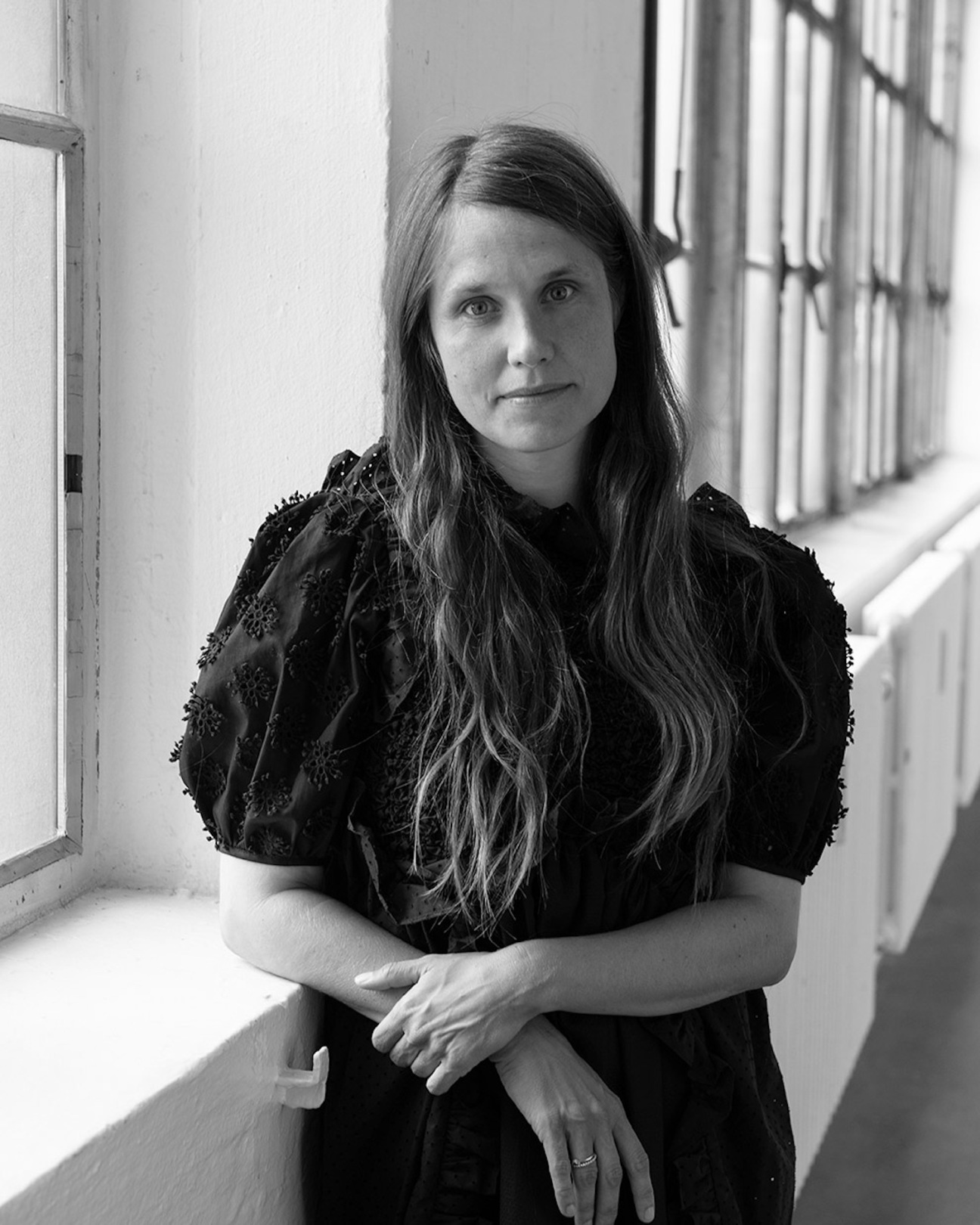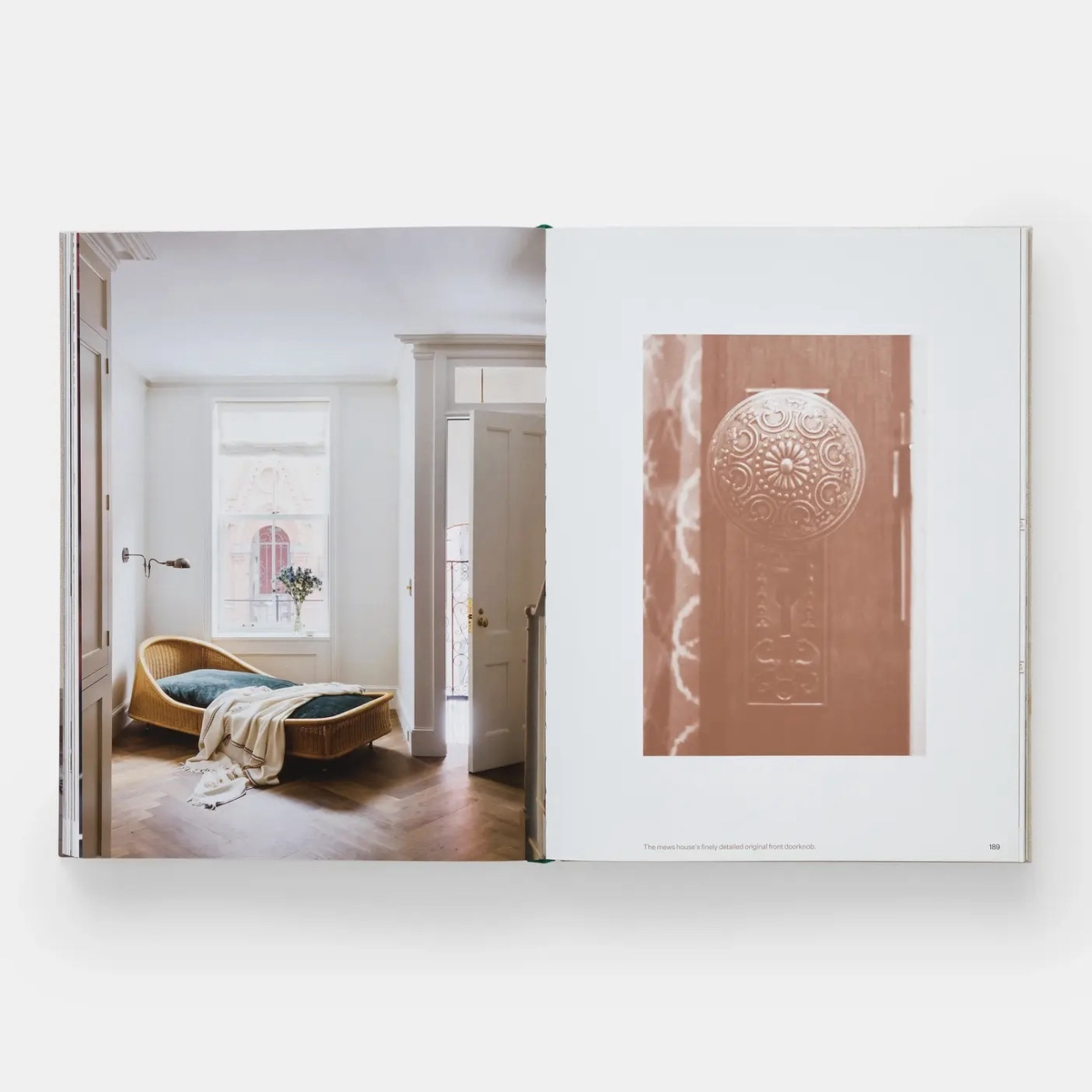
It was a chance meeting at a dinner party in Copenhagen that first brought together New York-based architect Elizabeth Roberts and Danish fashion designer Cecilie Bahnsen. Though they operate in different mediums—one with space, the other with the body—a sense of camaraderie sparked between them instantly.
Ahead of the publication of Roberts’s first monograph—Elizabeth Roberts Architects: Collected Stories from Phaidon, out this month—and the debut of Bahnsen’s Spring/Summer 2025 collection during Paris Fashion Week, the two women sat down to discuss motherhood, the beauty of imperfection, and why there’s nothing quite like bespoke designs.
Elizabeth Roberts: I love people who are doing really unique work, and your work stands out. You’ve got such a strong voice—it’s so soft, yet with an attitude. It’s hard to do things that are so your own, yet so universally admired.
Cecile Bahnsen: When we first met, we couldn’t stop chatting. Even though our fields are different, there are so many overlaps in how we produce. We put a lot of passion and energy into our work, but we also have this unpreciousness about what we do. We want the women that wear our clothes or live in our spaces to really feel like they’re them—that our designs don’t outshine them.

Roberts: I’m often working for one person, so I dive deep into what they’re after, but sometimes it can go too far. I can fall into their fantasies too much and create something that can feel a bit too temporary. It’s nice to get people out of their heads, out of perfection, and into real stuff. Like, How is this gonna fare for the next 10 years? Can your kids spill yogurt on it?
When we met in Copenhagen, you had your dress clipped up on the side. You told me that originally you didn’t have this clip on your dresses, but your studio mates needed it because they ride their bikes to work every day. That’s a perfect example of the kind of attitude I love: the idea that things aren’t perfect when you’re done with them. When they go out in the world, they become better.
Bahnsen: It’s like accidental beauty—the imperfection of these things that you explore as you live in them and make them your own. You’re creating this universe around your brand, but, once a woman puts it on, they add their own point of view and their own electricity to it. When I look at your work, I also see this unexpected choice of materials, which I really love. You strike a balance that feels quite intuitive and that is hard to put into words. I spend a lot of time refining that balance myself and trying to get it right.

Roberts: How did you decide to start your own brand?
Bahnsen: I wanted a change of pace. I moved back to Denmark to try and do fashion in a slower and more conscious way. I wanted to stay away from some of the pressure you have in bigger cities, although I am very lucky that I get to come to New York and tap into that energy again. But I definitely have this stubbornness inside me. I wanted to create a brand with a strong female voice, but I also wanted to be a mom. Today, I couldn’t imagine doing anything other than what I am doing. Being a mom is a huge part of my inspiration and features so much in what I create. At the end of the day, I think it’s my stubbornness that has served me best.
Roberts: A very stimulating part of our jobs is that we’re both lucky enough to work with people whom we can pass our values down to.
Bahnsen: That’s the most important part: The people you create with become family.

Roberts: And then they follow the life balance you’ve chosen, which is like, “Let’s not work until 3 in the morning. Ever. Let’s work really, really hard during working hours.” Those values used to be super rare in architecture. I want to be able to roam in the woods with my son on the weekend. I want to do beautiful things outside of work. Right now, you are quite busy, right?
Bahnsen: Yes, we are working on the show for Paris. It’s two months from today. It’s a very special time where everything that you worked on for months comes together and you’re making sense of all the bits and bobs. It’s one of my favorite times with the team; we are working on the looks and starting to see the movement in the collection. Somehow, despite all this preparation, you still get surprised.
Roberts: For us, we finally finished my book. It’s interesting to have to put things to words, and to apply a narrative about what we’re doing. I’ve never done that before. We usually create things and then other people write about them.

Bahnsen: It must have been very special choosing what to feature from your whole body of work.
Roberts: You can’t be too precious about it though. Besides Paris, are you focused on any special projects right now?
Bahnsen: We’re going really intimate and doing some made-to-order pieces. We are using all our archive fabrics and creating new pieces out of them. Some of the dresses are like patchworks of different seasons together. We make them for the customer personally and we always know who she is. That one-on-one approach is so inspiring for us.
Roberts: I designed a store for Rachel Comey, and I remember her telling me that she could hear people thumbing through the clothes and trying them on. She loved the conversations she overheard—a mother and daughter shopping together and talking about her designs. That personal stuff is why I decided I was going to work with families and go deep—as a result, I developed a portfolio that is very personal. Now, even with big projects, we keep them that way—personal.










 in your life?
in your life?

